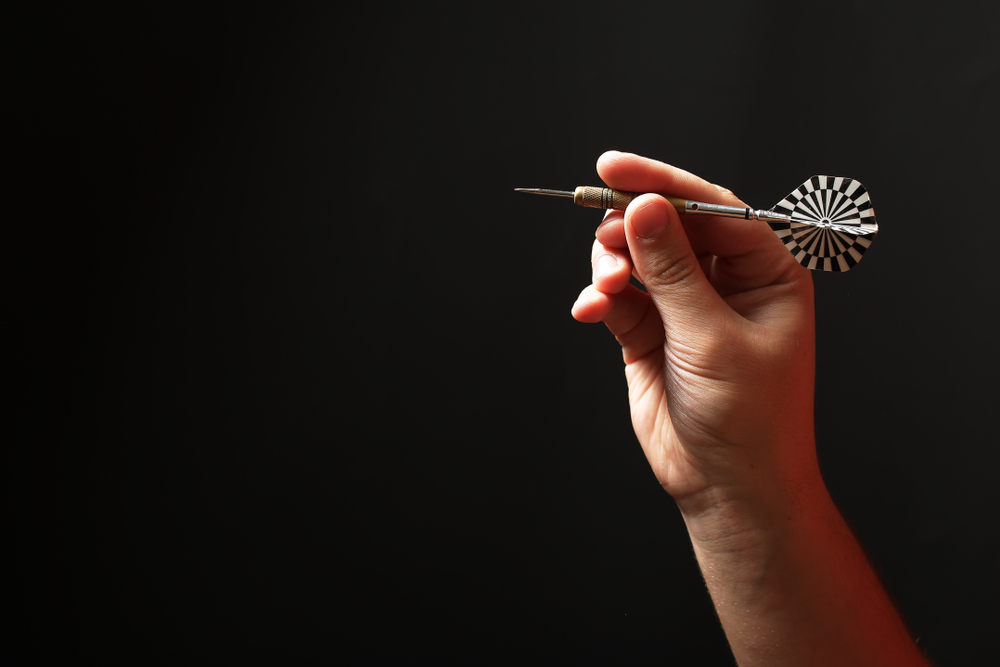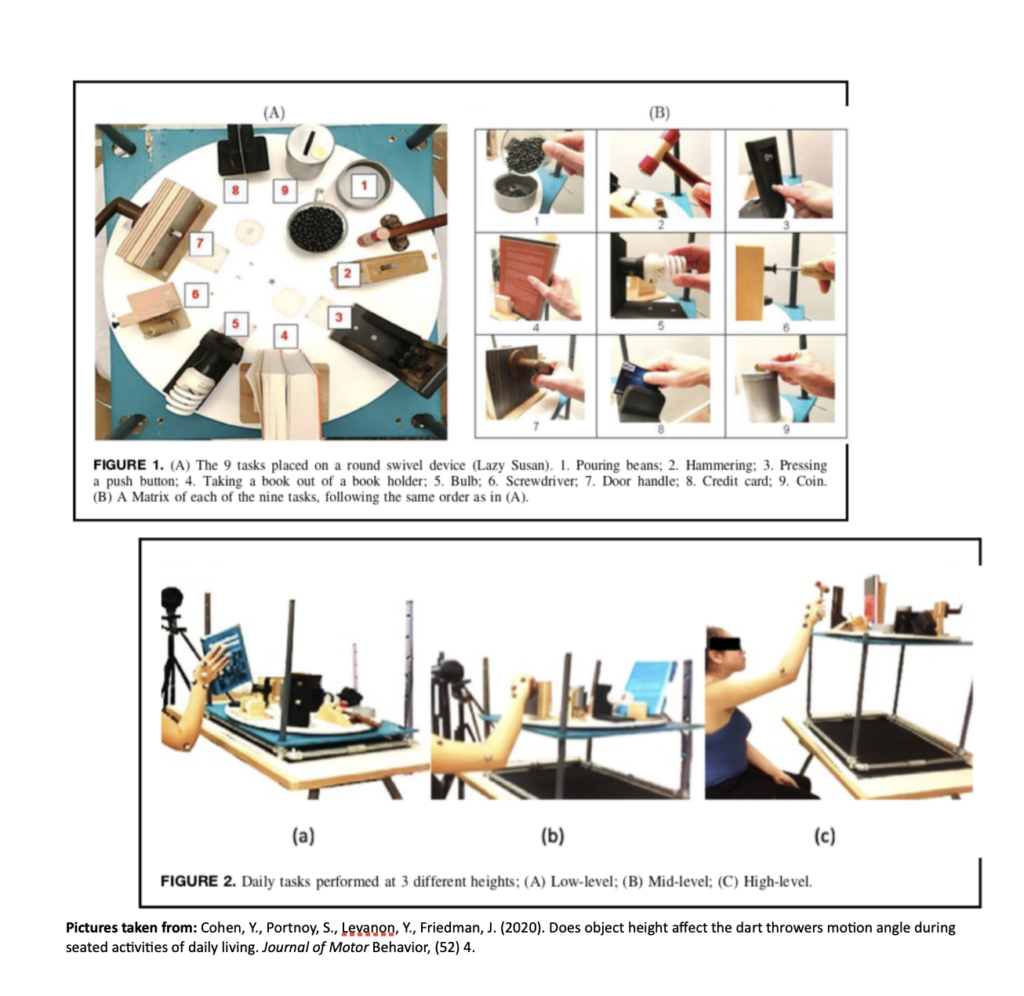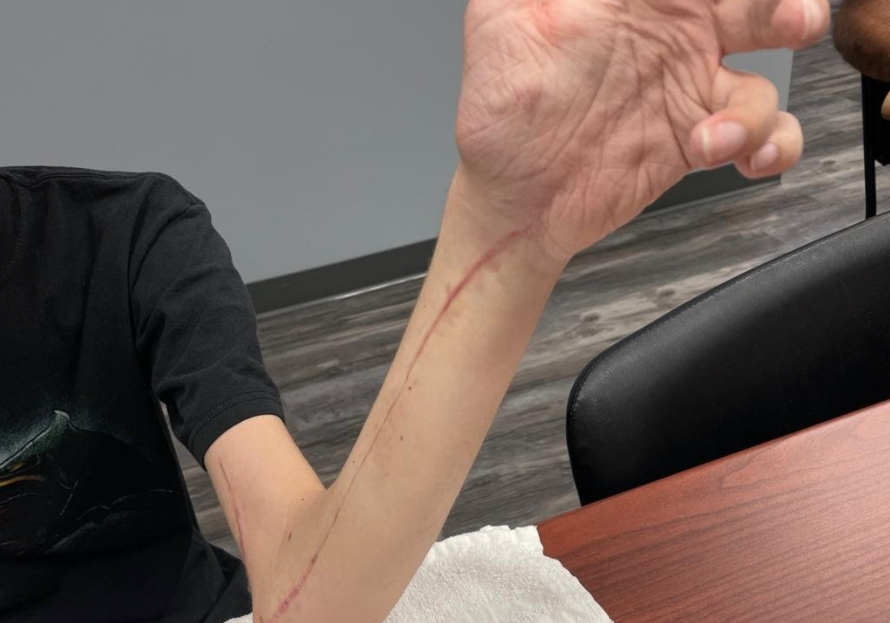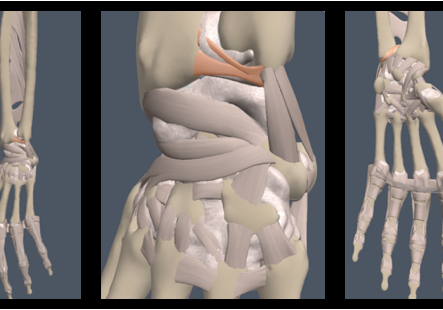Dart-throwing Angle in Hand Therapy for Scapholunate (SL) Ligament Injuries.
Filed under Treatments
Does Object Height Affect the Dart Throwing Motion Angle During Seated Activities of Daily Living? Cohen, Y., Portnoy, S., Levanon, Y., Friedman, J. (2020). Does object height affect the dart throwers motion angle during seated activities of daily living. Journal of Motor Behavior, (52) 4.
Article Review By: Rita Steffes

The Skinny:
Dart Throwers Motion (DTM) is the movement of radial extension to ulnar flexion and is a commonly used movement pattern used for patients in hand therapy with wrist instability and those with SL ligament injuries. This study aimed to examine the relationship of DTM plane of movement and limb positions during activities of daily living.
In the weeds:
In this study, 40 right-hand dominant participants were asked to complete nine tasks of daily living while seated that required DTM. The participants completed each task 3 times at a different height. Participants were recorded when completing each task with a precise motion camera with a 3-D tracking system to calculate the relation of motion between the distal and proximal segments.
The 9 tasks:
1. Pouring beans from a cup with a side handle
2. Hammering into a wooden board on a 45-degree slant
3. Pressing the push button with the thumb
4. Taking a book out of a bookholder
5. Rotating a light bulb socket fixed into a vertical wooden plank
6. Using a screwdriver to tighten screws in the vertical wooden fixture
7. Pushing down a door handle
8. Sliding a credit card through the machine slot
9. Inserting coins through a slot in a tin can

Bringing it home:
The results of this study showed that object height made a significant impact on DTM plane. In activities completed at the low-level, DTM was greater and decreased as the height of the activities increased. Results of this study also showed that in the sagittal plane, increased shoulder flexion significantly decreased the DTM plane. However, in the coronal plane, increased shoulder flexion increased DTM plane. Overall, this study found that a change of shoulder angles by 10 degrees or more leads to a -2.2-4.1 degree change in DTM.
Rating: 4/5
Overall, this was a very interesting and uniquely studied DTM in hand therapy. The findings of this study can overall improve therapy services for individuals following wrist instability and SL ligament injuries by providing different ways to modify activities for the best patient care. This study also can help make recommendations within a patient’s HEP with any ADL tasks they may report increased pain with completion.
More To Read
Arteriovenous Malformation (AVM hand)
By: Amalia Garcia Introduction After completing three weeks of my Level II hand therapy rotation, I have seen a wide variety of common upper extremity injuries such as carpal tunnel syndrome, distal radius fractures, mallet finger, flexor tendon lacerations, arthritis, and more. One condition that stood out to me was one that I hadn’t heard…
Read MoreDRUJ Instability and Hand Therapy Interventions
DRUJ Instability and Hand Therapy Interventions The distal radial ulnar joint (DRUJ) is the joint consisting of the distal radius and ulna which is held together by the ligamentous structure known as the TFC. DRUJ instability can be acute or chronic in nature. An acute injury is usually addressed by placing the patient in a…
Read MoreWhat? I just received an order for suture removal…
How many of us have practiced suture removal in occupational or physical therapy school?? NOT I!! Often, hand surgeons will ask the therapist to remove sutures and sometimes the order will even say “remove sutures when ready” SO NOW WHAT? How to remove continuous sutures? First, we can cover the basics of sutures! There are…
Read MoreSign-up to Get Updates Straight to Your Inbox!
Sign up with us and we will send you regular blog posts on everything hand therapy, notices every time we upload new videos and tutorials, along with handout, protocols, and other useful information.





